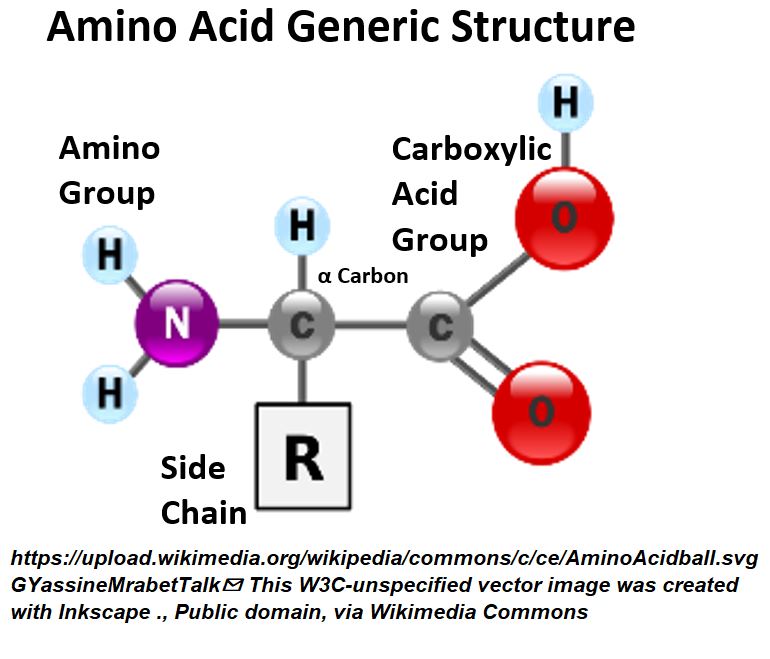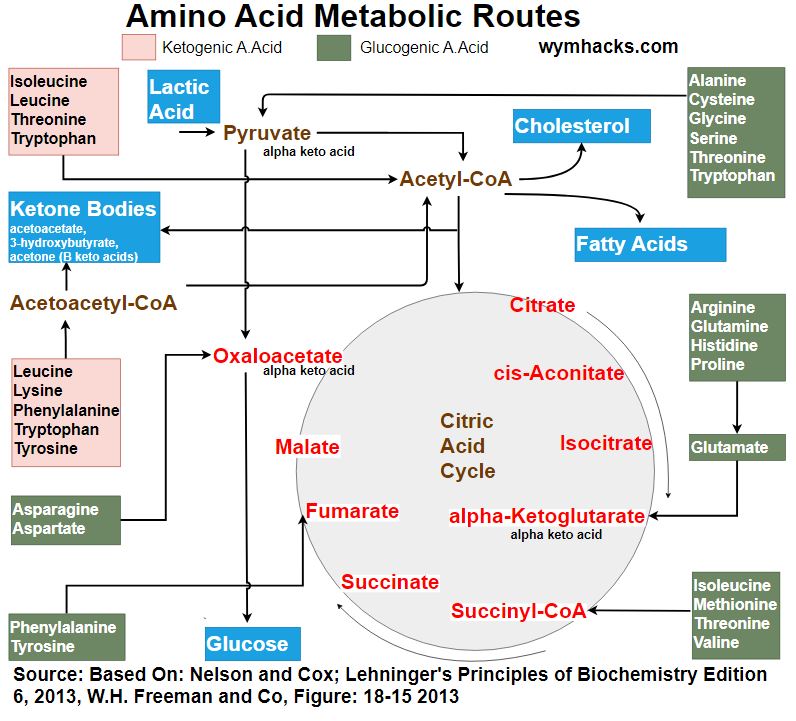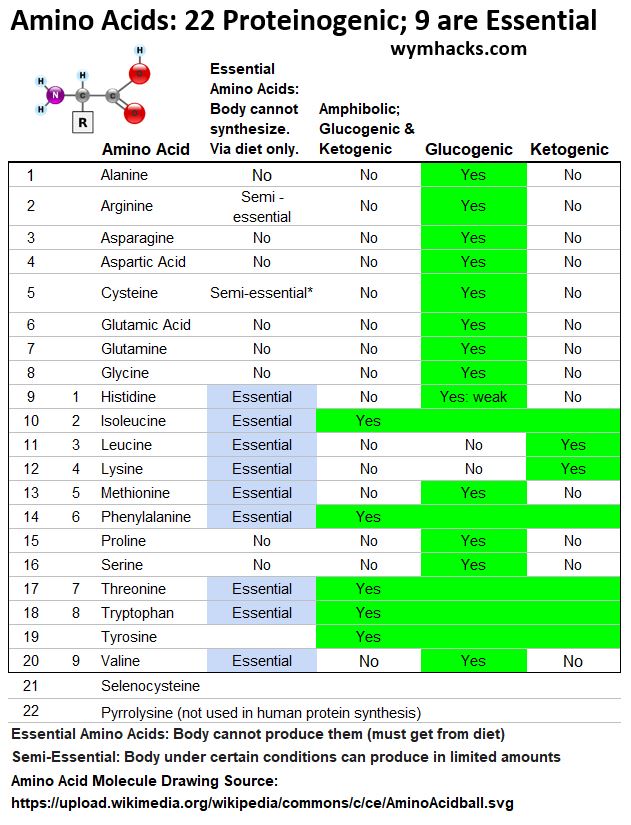Amino Acid Metabolic Routes
Amino Acid Metabolic Routes Chart
Last Update: November 4, 2024
Picture Amino Acid Metabolic Routes
Picture_Amino Acid Molecular Structure

Picture Amino Acids 22 Proteinogenic 9 Essential
Note: The following text (in quotations below) was generated with Google Gemini:
Amino Acids Defined
“Amino acids are the building blocks of proteins.
- They are organic compounds that combine to form proteins, which are essential for life.
- There are 20 different types of amino acids, and each one has a unique side chain that gives it specific properties.
- These side chains can be polar, nonpolar, acidic, or basic.
- The sequence of amino acids in a protein determines its structure and function.”
The Essential amino acids are nine amino acids that the human body cannot synthesize on its own and must be obtained from the diet.
The Proteinogenic amino acids are the 20 amino acids that are used to build proteins in living organisms.
While all proteinogenic amino acids are essential for life, only nine of them are considered essential amino acids.”
Amino Acids Build Molecules
“Amino acids are the building blocks of proteins, but they also play a crucial role in biosynthesis beyond protein synthesis. They serve as precursors for various biomolecules, including:
- Hormones: Many hormones, such as insulin and growth hormone, are peptide hormones composed of amino acids.
- Neurotransmitters: Neurotransmitters like dopamine, serotonin, and glutamate are derived from amino acids.
- Nucleotides: Amino acids contribute to the synthesis of nucleotides, the building blocks of DNA and RNA.
- Other biomolecules: Amino acids are involved in the synthesis of heme, creatine, and other essential compounds.”
Ketogenic and Glucogenic Amino Acids
Glucogenic Amino Acids
- “Gluconeogenesis:
- Pyruvate Pathway: Some amino acids are directly converted to pyruvate, which can then be used to synthesize glucose (Gluconeogenesis).
- Citric Acid Cycle Pathway: Many amino acids are converted into intermediates of the Citric Acid Cycle (Krebs Cycle).
- These intermediates can then be used to generate glucose through a series of reactions.
- Oxaloacetate is a particularly important intermediate, as it can be converted back to phosphoenolpyruvate, a key precursor for glucose synthesis.
- Direct Entry into the Citric Acid Cycle:
- Amino acids converted into intermediates of the citric acid cycle can also directly enter the Cellular Respiration pathway.
In summary, glucogenic amino acids offer a versatile metabolic pathway.
They can either be directly converted to glucose or contribute to energy production through the citric acid cycle.
Oxaloacetate serves as a crucial link between these two pathways, allowing for flexibility in the metabolic fate of amino acids.”
Ketogenic Amino Acids
“These amino acids are primarily metabolized into acetyl-CoA or acetoacetate, which can be used to produce ketone bodies.
- Ketone bodies can serve as an alternative energy source, especially during fasting or low-carbohydrate diets.”
Amphibolic Amino Acids
“These amino acids can be metabolized into both glucose and ketone bodies, depending on the metabolic needs of the body.
It’s important to note that the specific metabolic fate of an amino acid can vary depending on various factors, including the physiological state of the individual.”
Note: The text (in quotations above) was generated with Google Gemini.
Disclaimer: The content of this article is intended for general informational and recreational purposes only and is not a substitute for professional “advice”. We are not responsible for your decisions and actions. Refer to our Disclaimer Page.


